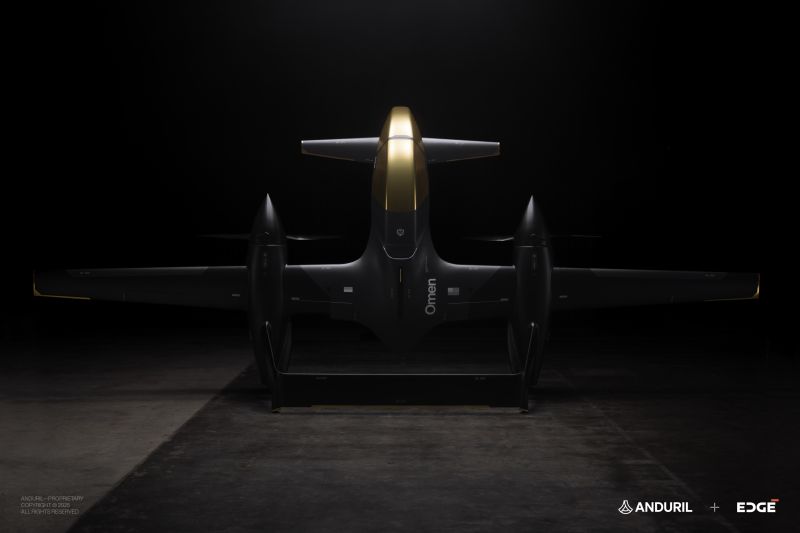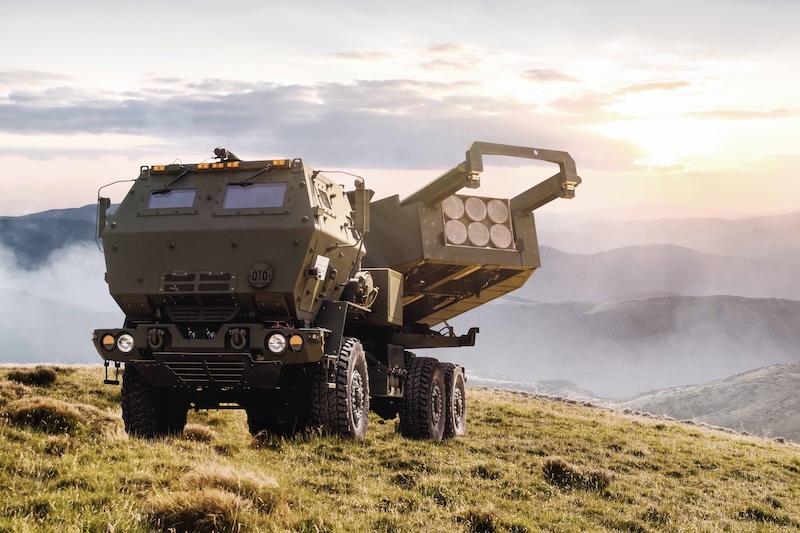Californian company Anduril Industries has unveiled its Omen Vertical Take-Off and Landing (VTOL) Group 3…

Anduril details Omen
The Omen Group 3 Autonomous Air Vehicle (AAV) will be the first of many systems to be co-developed and locally produced by the EDGE-Anduril Production Alliance, says Anduril. The company describes Omen, which first flew in prototype form in 2020, as a ‘hover-to-cruise’ AAV combining the endurance, payload, and autonomy of larger systems with the flexibility of a compact, runway-independent airframe. The Vertical Take-Off and Landing (VTOL) Omen is a tail-sitter that flips over to winged flight, like a conventional aircraft, once it is airborne.
The company declined to provide dimensions and performance figures for it, but it is designed to operate over Pacific-relevant ranges: California to Hawaii in a single hop, for example. Range, of course, is inversely related to the drag and weight of its payload.
During its development Anduril built five versions of the Omen. It is a hybrid with high density battery-powered electric motors outboard for vertical take-off and landing and a small jet engine for cruise, to recharge the batteries and, with an alternator output of ‘several hundreds of kilowatts’, to power payloads such as the (unspecified) Electromagnetic Warfare (EW) system that Omen could carry. It can also carry a Synthetic Aperture Radar (SAR) and EO/IR turret and a target designator. It can also carry strike weapons
For ease of transport and storage it breaks down into a cube, two of which will fit into the body of a V-22 Osprey, one of which could go onto the load bed of a ute. The aircraft sits on what Anduril terms a ‘super cart’ where it is refuelled and re-armed and which can take it apart and fold it into the storage cube.
Omen builds on Anduril’s US$850 million investment in Lattice Operating System (OS) mission autonomy technology and Group 3 VTOL development, paired with nearly US$200 million in new investment from EDGE. Together, the companies will take the aircraft from development to full-rate production by the end of 2028.
Omen will provide long-range and high payload for distributed and expeditionary operations, says Anduril. Multiple aircraft will coordinate flight paths, share sensor data, and adapt behaviour in real time, enabling new missions that bring the capabilities of much larger systems to smaller, more expeditionary units, the company says.
Its lightweight, foldable frame will allow a two-person team to transport, assemble, and launch the aircraft in minutes without specialized infrastructure. Built for endurance and heavy payloads, Omen will support missions ranging from maritime surveillance and logistics resupply to air defense sensing and communications relay.
Its open, modular architecture will enable reconfiguration for different missions. Beyond military use, Omen will be optimized for a variety of commercial mission sets. For example, Omen could serve as an airborne cell tower to restore connectivity after natural disasters, support humanitarian relief, or deliver critical supplies to remote areas when ground access is cut off.



